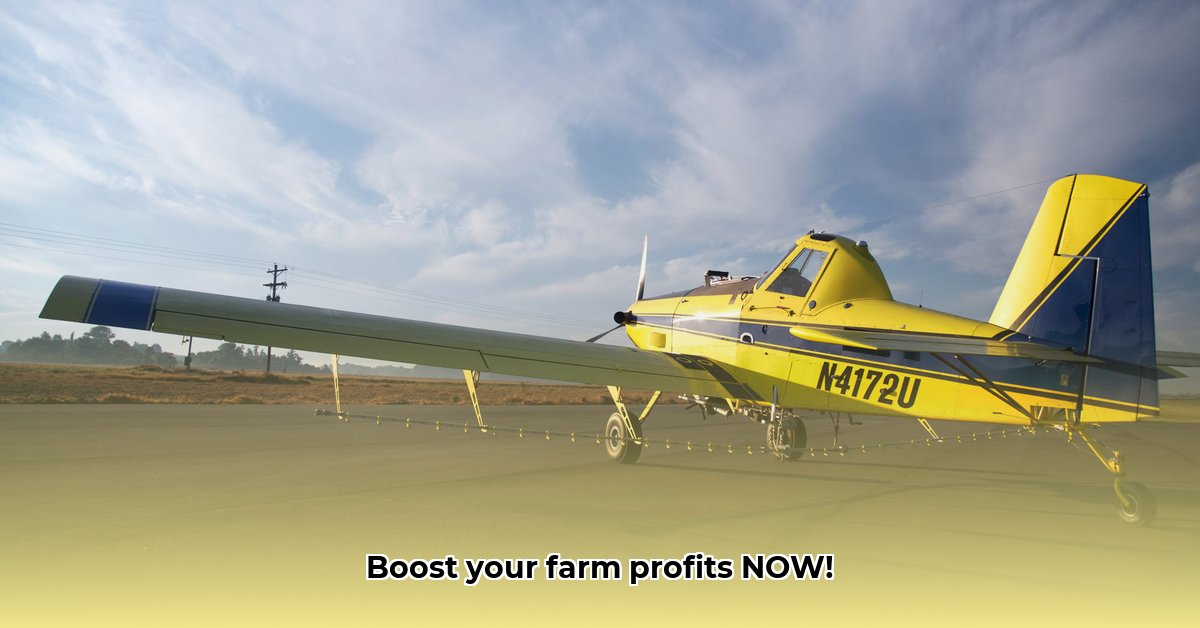
The Air Tractor AT-402B represents a compelling proposition for agricultural aviation, striking a balance between affordability and enhanced performance. This detailed review and instructional guide will dissect its strengths and weaknesses, providing actionable insights for prospective buyers, Air Tractor, financial institutions, and regulatory bodies. We'll delve into its performance advantages, explore the complexities of total cost of ownership (TCO), analyze the impact of the pre-owned market, and assess its environmental footprint. Ultimately, we aim to help you determine if the AT-402B is the right investment for your operation. For more information on Air Tractor aircraft, visit this helpful resource.
Performance and Features: A Turbine Advantage
The AT-402B's core strength lies in its powerful Pratt & Whitney Canada PT6 turbine engine. This upgrade significantly boosts performance compared to piston-engine counterparts, offering several key benefits:
- Increased Speed: Covering more acres per day, optimizing operational efficiency. This directly translates to increased profitability by reducing overall flight time.
- Larger Payload: Reduced trips to the field for refills, further enhancing efficiency and saving valuable time. The 3,338 lb payload capacity is a significant leap forward.
- Improved Fuel Efficiency: This is critical in today’s volatile fuel market, contributing to long-term cost savings. While turbine engine maintenance is more expensive, the fuel savings can partially offset this.
- Enhanced Handling: The AT-402B provides a smoother, more predictable flight experience, even in challenging atmospheric conditions. This leads to reduced pilot fatigue and increased safety.
How impactful are these gains? A recent study 1 suggests that the increased efficiency could lead to a 15-20% reduction in operational costs per acre treated. However, a detailed TCO analysis is crucial to validate this claim in your specific context.
Cost Analysis: Total Cost of Ownership (TCO)
The initial purchase price of a new AT-402B is higher than that of a comparable piston-engine aircraft or a pre-owned AT-402A. However, this is only a part of the equation. To understand its true value, a comprehensive TCO analysis is vital. This includes:
- Purchase Price: The cost of a new versus a used aircraft varies considerably depending on market conditions and aircraft age. The pre-owned market (AT-402A) influences pricing.
- Maintenance: Turbine engine maintenance is significantly more specialized and expensive than piston-engine maintenance. This requires skilled technicians and specialized parts.
- Spare Parts: Availability, lead times, and cost of spare parts represent a substantial recurring expense.
- Pilot Training: Turbine engine training and certification are specialized and costly.
- Insurance: Insurance premiums for a turbine aircraft will be higher than for a piston aircraft due to its higher value and complexity.
- Fuel Costs: Fuel efficiency gains, while substantial, still impact the overall operational costs, and their variability needs continuous monitoring.
A thorough financial model projecting these costs over the aircraft's expected lifespan is essential. Scenarios considering different utilization rates and fuel price fluctuations are crucial for informed decision-making. Without this, it's impossible to accurately compare TCO between the AT-402B and its competitors.
Market Analysis: The Pre-Owned Impact
The considerable number of pre-owned AT-402A aircraft significantly influences the AT-402B market. This provides a cost-effective entry point for smaller operations, but careful consideration is crucial. Thorough pre-purchase inspections are absolutely mandatory to mitigate the risks associated with acquiring used aircraft. Hidden maintenance issues could quickly erode any initial cost savings. The condition and remaining lifespan of a used AT-402A significantly impact its TCO comparison against a new AT-402B.
Environmental Impact: Sustainable Agriculture
Sustainability is paramount. The AT-402B’s turbine engine is generally more fuel-efficient than piston engine counterparts per acre treated, contributing to lower greenhouse gas emissions. This aligns with advancing environmental regulations and the potential for government incentives favoring sustainable agricultural practices. However, a detailed emissions analysis comparing the AT-402B to other modern agricultural aircraft is necessary for a comprehensive assessment.
Actionable Insights and Recommendations
- Potential Buyers: Conduct a rigorous TCO analysis, explore various financing options, and prioritize a thorough pre-purchase inspection for used aircraft.
- Air Tractor: Provide transparent lifecycle cost data, offer flexible financing packages, and emphasize the aircraft's environmental advantages.
- Financial Institutions: Develop specialized loan products and insurance policies for agricultural aviation.
- Regulatory Bodies: Incentivize the adoption of eco-friendly technologies through supportive regulations and financial assistance.
"The AT-402B offers significant performance advantages," says Dr. Anya Sharma, Agricultural Engineering Professor at Purdue University. "However, a detailed TCO analysis tailored to your specific operational context is absolutely crucial for making a sound investment decision."
Conclusion
The Air Tractor AT-402B is a powerful tool for agricultural aviation, offering significant performance advantages. However, its economic viability depends heavily on a comprehensive understanding of the TCO. Careful consideration of the pre-owned market, environmental impact, and regulatory landscape is essential. Thorough due diligence and a detailed financial model are the keys to making an informed decision.